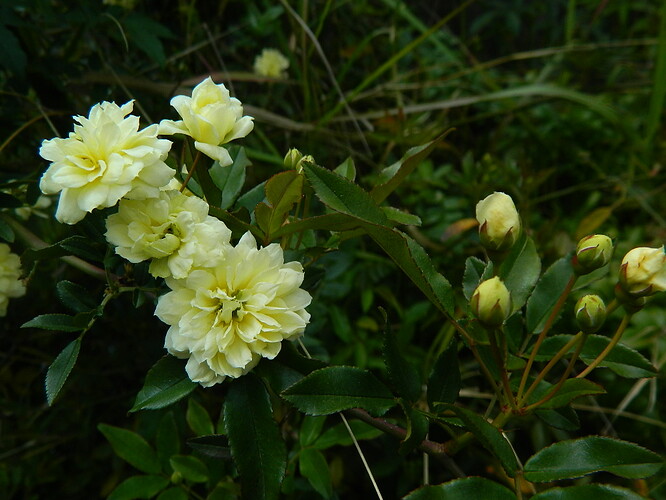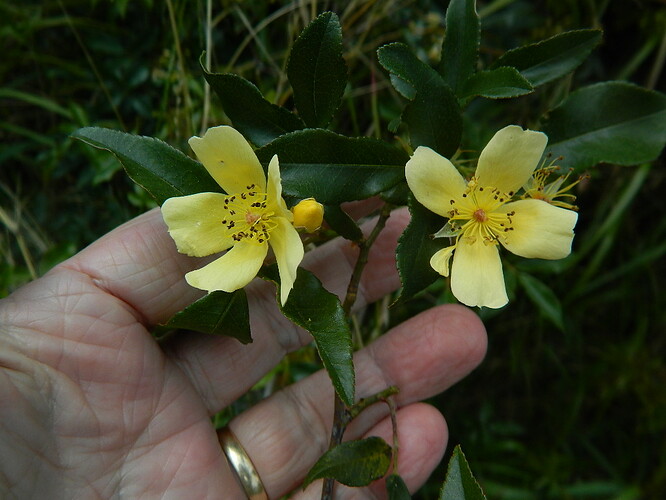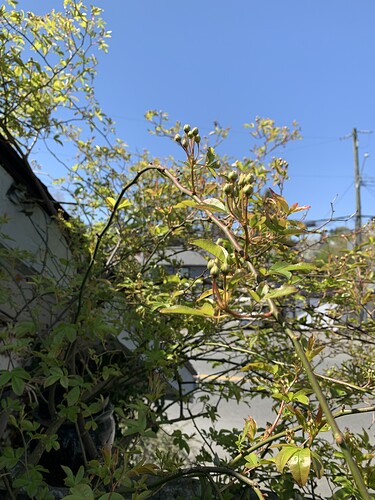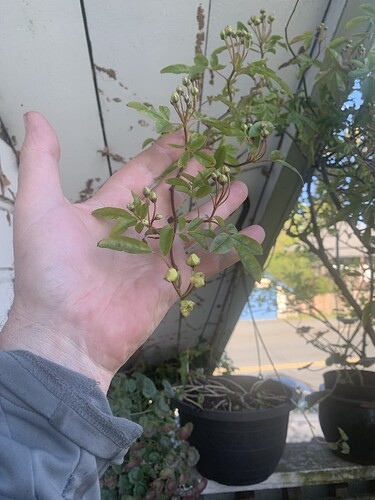Do they flower at the same time? Probably the wrong place to ask
I don’t have first hand experience with both, but double-flowered variants of most species tend to flower slightly later than their single-flowered counterparts as a general rule. I’m guessing that someone here is growing or has grown both at the same time. It’s difficult to find sources for the single-flowered f. lutescens here in the U.S. right now; the more widely available, double-flowered f. lutea is approaching full bloom in my garden as we speak.
In all areas of California in which I have observed Banksiaes, they all flower at the same time. In my coastal climate, the doubles, Lutescens and Fortuniana are all in flower now. Our climate trigger “rebloom” in all of them and when one flowers, the others do, too. I also grow General Vallejo’s Yellow Banksiae, which is flowering with them. "General Vallejo's Yellow Banksiae" Rose
Basye’s Amphidiploid 86-3, the Banksiae X Laevigata hybrid, flowers right along with them. https://www.helpmefind.com/rose/l.php?l=2.58660
They all flower at the same time here too in South Carolina.
-Jonathan
Something I have kept meaning to add about Banksiae… I’ve long read it can require up to two years to germinate, however I’ve raised three OP seedlings from Lutescens which germinated in only four months. And, this double is one of the four month OP seedlings from Lutescens’ seed. So, is the double really a sport or are they naturally occurring seedlings? My experience indicates double flowers are a natural occurrence possible from Banksiae. Purezza is also flowering with the others.
Beautiful, thanks for the responses everyone!
Surely the mutation has had to reach the germinative-layers, if seed from the single form can produce double-flowered forms? Maybe the single-form (as collected originally) was a reverse-sport of the double? Although that seems like an unnecessary extra step, thinking it through. Lol
Supposedly, lutea selfed resulted in this. 'Rosa banksiae lutea simplex' Rose Then, this one. 'Rosa banksiae alba simplex' Rose Though I have never found hips containing anything on any double form of any Banksiae I have ever “molested”. And, I’ve “molested” my share looking for them! I’ve not grown the single white, though I’d love to. I’ve had Lutescens for nearly twenty years and continue playing with it annually.
They aren’t growing in identical conditions, but my R. banksiae f. lutea is going full tilt, while ‘Purezza’ has just cracked open its first flowers here in Maryland. My “Snowflake” is evidently still too young to flower, but interestingly, it has a few small prickles at the thinnest ends of a cane from last year; I thought that it was thornless, but maybe that’s not entirely the case.
I had meant to check on the plants of R. banksiae var. banksiae (the double white, thornless) and R. banksiae var. normalis (single, white, and thorny) at work today but ran out of time. The latter was collected from the wild, so if any is going to show some differences in bloom time within the species, that one should.
Those Tom Thumb genes in Purezza appear to demand higher heat to flower than traditional Banksiae and Fortuniana do. I can get them going simultaneously by growing Purezza against a fence which reflects and radiates enough heat to get it going. I have friends, also in a “beach climate” like here, who traditionally experienced “repeat” from the Banksiaes while Purezza flowered just once, when they had enough heat, but when that heat subsided, Purezza stopped. Further inland, where the heat arrives like being turned on via a switch and continues for many months, Purezza flowered like a weed as long as it was hot.
That tracks. My f. lutea got “confused” for the first time this winter and started flowering a little in January or February–it wasn’t even particularly warm at the time–and then stopped after being frozen into submission until just recently, when it began its usual sequence. I don’t think that my ‘Purezza’ has ever flowered after the main flush. Summer heat isn’t a problem here, but it’s a very different kind of heat (humid with warm to hot nights), and doesn’t always arrive in full force until after these are finished flowering. Of course, I was expecting it to be a bit smaller, too, but it looks like it could become about as big as any R. banksiae now that it’s really taking off. I do wonder if it will ever develop the incredible shredding, reddish bark and massive trunk that is one of R. banksiae’s best and least mentioned features.



